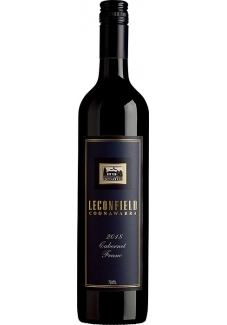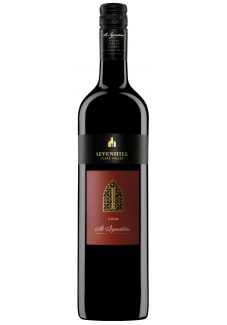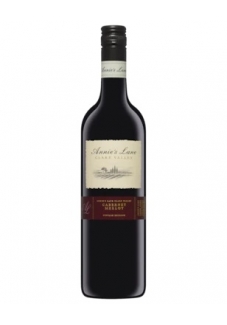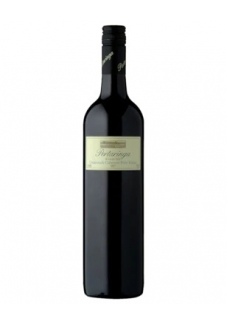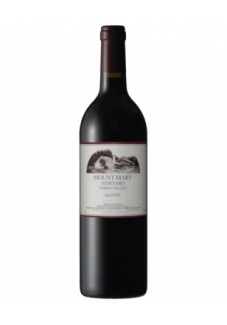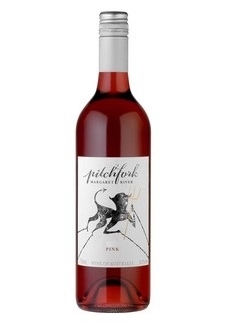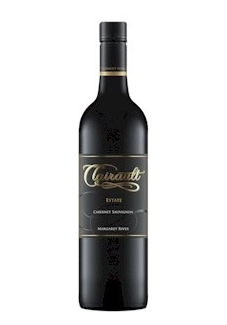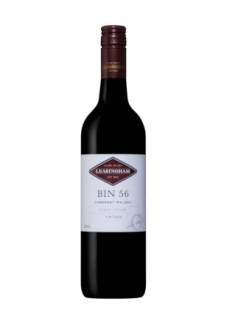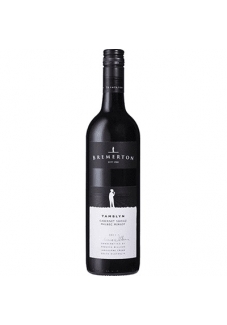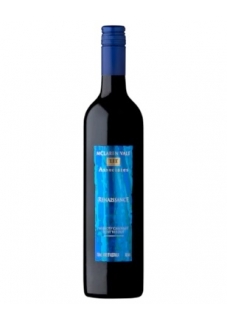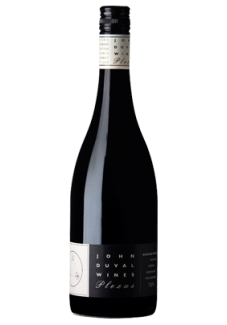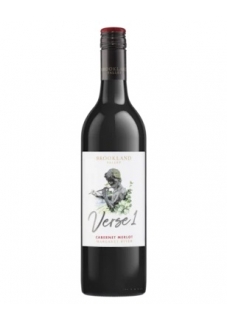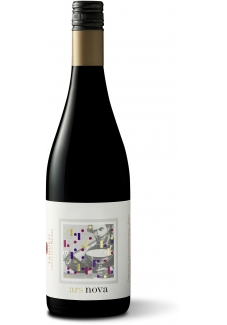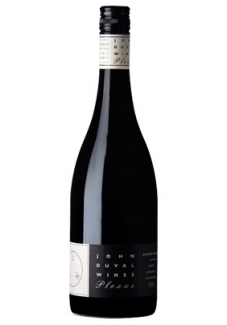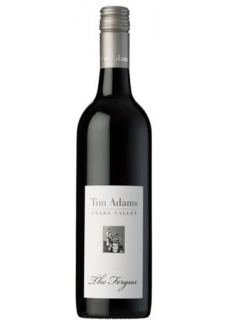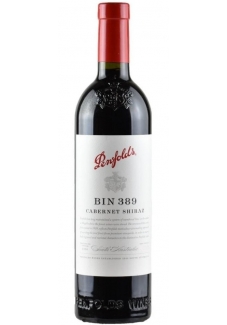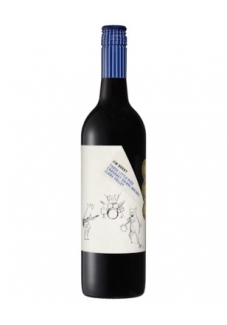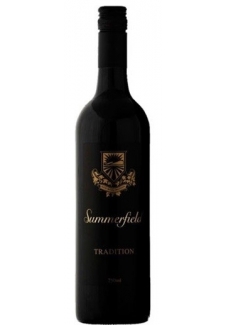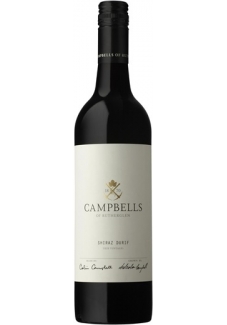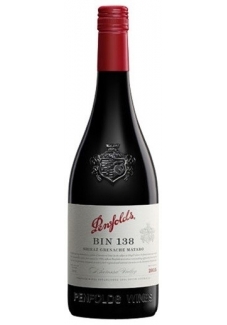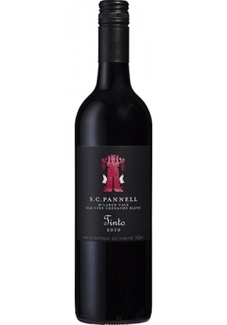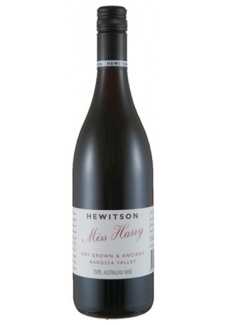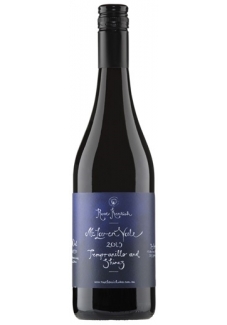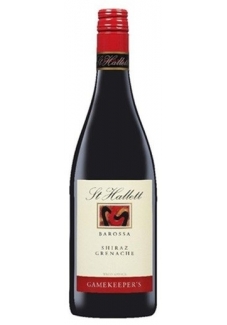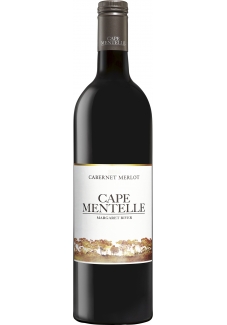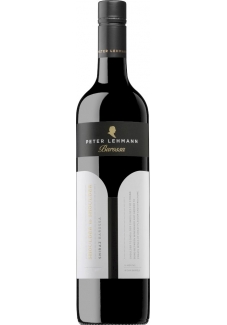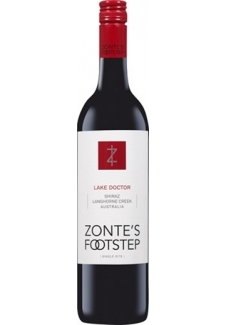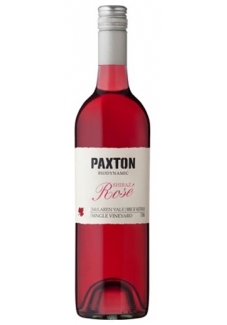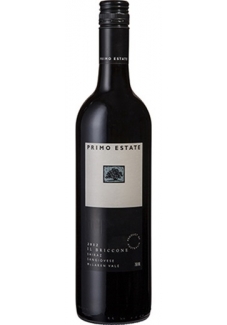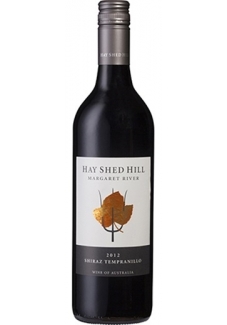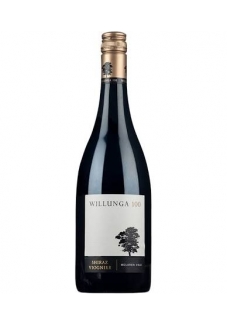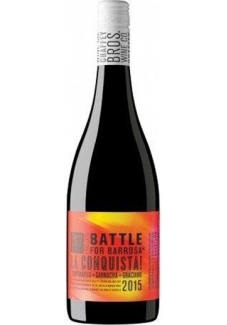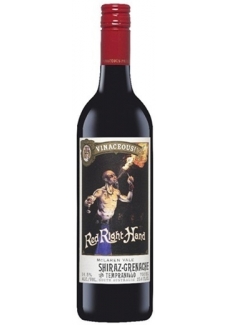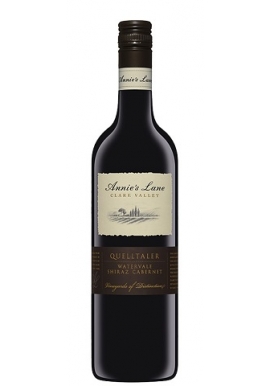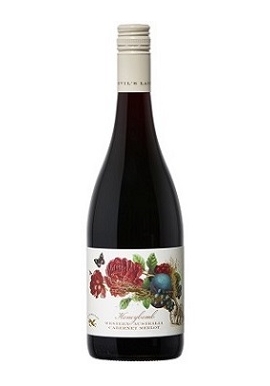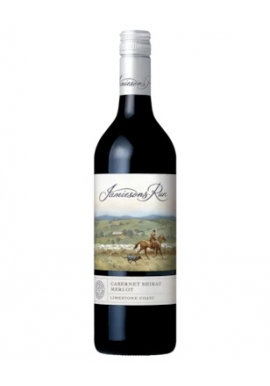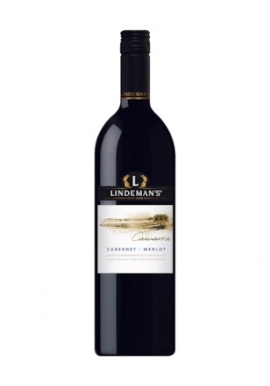AUSTRALIAN RED BLENDS
- Barbera Sangiovese
- Cabernet Franc
- Cabernet Malbec
- Cabernet Malbec Merlot
- Cabernet Shiraz Merlot Petit Verdot
- Cabernet Merlot
- Cabernet Petit Verdot
- Cabernet Pinot Bordeaux Blend
- Cabernet Rose
- Cabernet Sauvignon Cabernet Franc Malbec
- Cabernet Sauvignon Franc Merlot
- Cabernet Sauvignon Malbec
- Cabernet Sauvignon Cabernet Franc Malbec Merlot
- Cabernet Sauvignon Petit Verdot Shiraz Merlot
- Cabernet Sauvignon Sangiovese Merlot
- Cabernet Shiraz
- Cabernet Shiraz Grenache
- Cabernet Shiraz Malbec Merlot
- Cabernet Shiraz Merlot
- Cabernet Shiraz Rose
- Cabernet Tarrango
- Cabernet Tempranillo
- Grenache Syrah Mourverdre
- Grenache Tempranillo Shiraz Mataro
- Malbec Petit Verdot
- Shiraz Barbera Nebbiolo
- Shiraz Cabernet
- Shiraz Cabernet Malbec
- Shiraz Cabernet Sauvignon Franc
- Shiraz Cabernet Sauvignon Petit Verdot
- Shiraz Durif Cabernet
- Shiraz Grenache
- Shiraz Grenache Matro
- Shiraz Grenache Monastrell Touriga
- Shiraz Grenache Mourvedre
- Shiraz Grenache Tempranillo
- Shiraz Grenache Touriga & Malbec Blends
- Shiraz Grenache Viognier Mourvedre
- Shiraz Mataro
- Shiraz Mourverde
- Shiraz Mascadelle
- Shiraz Petit Sirah
- Shiraz Riesling
- Shiraz Rose
- Shiraz Sangiovese
- Shiraz Tempranillo
- Shiraz Viognier
- Tempranillo Grenache
- Tempranillo Grenache Viognier
Red wine blends and the varieties which accompanying this great widely travelled grape of the world, is the red Bordeaux, which is just about what everyone wants to grow. This main grape, being the Cabernet Sauvignon. It is well known that most Cabernet Sauvignon are better with just a little blending of some other grape when added to round out ...
Red wine blends and the varieties which accompanying this great widely travelled grape of the world, is the red Bordeaux, which is just about what everyone wants to grow. This main grape, being the Cabernet Sauvignon. It is well known that most Cabernet Sauvignon are better with just a little blending of some other grape when added to round out its sometime lean flavours, the other Bordeaux grapes, Merlot and Cabernet Franc, have come along as part to complement this variety.The red blends can deliver elegance, structure, and a certain debonair style. The classic flavours of the red Bordeaux is blackcurrants and cedarwood - that's Cabernet Sauvignon. It's the most polished traveller possible.However, when the Cabernet Sauvignon is often blended with Sangiovese,the blend is spectacularly.When Merlot takes over as the main grape in the blend, usually stiffened with a little Cabernet Sauvignon or Cabernet Franc can give the wine a bit more backbone. It makes a softer, more toffeeish wine than Cabernet Sauvignon, with luster, plummier fruit, but it doesn't usually age as well and can taste dull.
The Cabernet Franc varietal has a more grassier, lighter, more raspberryish flavour than the Cabernet Sauvignon. In a blend it adds perfume and elegance. Then again the number of varietal combinations such as Shiraz, Grenache, Pinot, Tempranillo, Zinfandel, Mourvedre, Dolcetto, Sangiovese, Nebbiolo, Sangiovese and Barbera can only provide interesting wines of character, taste, depth and quality.
Chancellors Cellars is proud to present an extensive list of Australian and International wines. Unlike Europe, Australia is not governed by the strict wine laws imposed on European wine growers, who are restricted to growing certain grapes in certain areas. The result is that while France for example has thirteen (13) wine growing regions, Australia has in excess of thirty five (35). The freedom to experiment outside these restriction in the Antipodean New World has also led to an entirely fresh crop of tastes and textures of wine. Chancellors Cellars aims is to provide you with a fascinating tour of both International and Australian wines.Of course, each state and within that state in Australia, or in the case International wines regarding provinces each region has its unique soil, climate and levation that gives that varietal wine its uniqueness, flavour, texture, and palate.
For many wine connoisseurs who may suggest which wines to choose to drink can be very helpful. These consist of wines for immediate drinking which generally applies to cheaper, budget quaffing wines - Hunter Verdelho, Barossa Semillon, almost all Riesling, Adelaide Hills Sauvignon Blanc, most Chardonnay, Chambourcin, Pinot Noirs, Shiraz, and Cabernets. No doubt there are wines for the medium term that require storage and cellaring from five (5) to ten (10) years. Generally this applies to medium priced wines such as Margaret River Chardonnay, Clare and Eden Valley Rieslings, Hunter Semillon, South Australia Shiraz, Margaret River Cabernet, Great Western wines from Bests, Central Victoria wines from Tahbilk and Heathcote wineries, Barossa Shiraz, McLaren Vale Shiraz.Wines for longer term storage that is ten years plus (10 plus). This generally applies to the best examples of each being: Hunter Semillon, Leeuwin Estate Chardonnay, Clare and Eden Rieslings, Tahbilk Marsanne, Rutherglen special and rare sweeties which will last for ever. Yarra Pinot Noir, Yarra Cabernet blends, Bests Great Western range Reds, Coonawarra cabernets especially Wynns and Barossa Shiraz. Overall the Western Australia wine region consists of the following:- Swan District, Perth Hills Blackwood Valley, Geographe, Great Southern Margaret River and Pemberton, these region represent some of the most revered wines made. critics the world over applaud the cabernets produced in Margaret River.
AUSTRALIAN RED BLENDS There are 20 products.
Subcategories
-
Barbera Sangiovese
The combined blend of Barbera Sangiovese is the use of Barbera which is another Italian variety that has inspired Australian makers to experiment, with a fairly rich, ripe cherry and plum flavours across the palate. In addition the use of Sangiovese the red grape of Chianti. So vast are the plantations in Italy that many versions of the vine and the wines can be found. In Australia, it is one of the exciting new varieties with 603 hectares already planted . Quite a lot of it is in the King Valley in Victoria and in Mudgee, New South Wales. The wines are described as rustic, leathery, earthy, farmyard and prunes, try them with food, especially Italian food, and you will be impressed. They are fairly big, dry wines but not too tannic.
-
Cabernet Franc
Cabernet Franc is similar to cabernet sauvignon, though lighter in style, and is not known for its individuality. It blends with cabernet sauvignon and sometimes ruby cabernet to make the accepted wine titled cabernets. All are expected to be dry reds.
-
Cabernet Malbec
Cabernet Malbec comes from the world famous noble red grape variety that is the basis for the top Bordeaux wines. It is full flavoured and tannic with great aging potential. It provides a key blending element to many of Australia's red blends, the Malbec complements' the blend with a very dark coloured grape. Red wine blends and the varieties which accompanying this great widely travelled grape of the world, is the red Bordeaux, which is just about what everyone wants to grow. This main grape, being the Cabernet Sauvignon. It is well known that most Cabernet Sauvignon are better with just a little blending of some other grape when added to round out its sometime lean flavours, the other Bordeaux grapes, Merlot and Cabernet Franc, have come along as part to complement this variety.The red blends can deliver elegance, structure, and a certain debonair style. The classic flavours of the red Bordeaux is blackcurrants and cedarwood - that's Cabernet Sauvignon. It's the most polished traveller possible.However, when the Cabernet Sauvignon is often blended with Sangiovese,the blend is spectacularly.When Merlot takes over as the main grape in the blend, usually stiffened with a little Cabernet Sauvignon or Cabernet Franc can give the wine a bit more backbone. It makes a softer, more toffeeish wine than Cabernet Sauvignon, with luster, plummier fruit, but it doesn't usually age as well and can taste dull.
The Cabernet Franc varietal has a more grassier, lighter, more raspberryish flavour than the Cabernet Sauvignon. In a blend it adds perfume and elegance. Then again the number of varietal combinations such as Shiraz, Grenache, Pinot, Tempranillo, Zinfandel, Mourvedre, Dolcetto, Sangiovese, Nebbiolo, Sangiovese and Barbera can only provide interesting wines of character, taste, depth and quality.
-
Cabernet Malbec Merlot
Cabernet Malbec Merlot comes from the world famous noble red grape variety that is the basis for the top Bordeaux wines.It is full flavoured and tannic with great aging potential.It provides a key blending element to many of Australia's red blends, the Malbec compliments the blend with a very dark coloured grape.
-
Cabernet Shiraz Merlot...
Cabernet Malbec Shiraz Merlot Petit Verdot is a powerful wine blend which is stylistically different to that of previous blends with powerful flavours of blackberries, dark cherries and violets integrating beautifully with the very subtle French oak characters and leading to a delightfully soft, round palate with pleasing sweet fruit richness. Elegant and with silky tannins the blend is a delight to enjoy.
-
Cabernet Merlot
Cabernet Merlot is a blend with a merlot grape variety. The key grape variety being the Merlot blend with a Cabernet produces a smoother, rounder wine that is often referred to by experts as plummy,luscious and velvety.
-
Cabernet Petit Verdot
This combined blend incorporates Australian Cabernet which produces a smoother, rounder wine that is often referred to by experts as plummy,luscious and velvety. While the Petit Verdot has a valuable density of colour and tanic acid. It is usually used in small quantities to provide extra strength to red blends
-
Cabernet Pinot...
Cabernet Pinot Bordeaux Blend...This combined blend incorporates Australian Cabernet which produces a smoother, rounder wine that is often referred to by experts as plummy,luscious and velvety. While the Pinot Bordeaux has a valuable density of colour and it will seduce with red fruit flavours, and tantalise with forest floor aromas. Be critical of wines that have too obvious oak tannin or stalky,stemmy green characters.It is most important that you can taste the velvety fruit right through the palate.It is usually used in small quantities to provide extra strength to red blends.
-
Cabernet Rose
Cabernet Rose ...the combination of the grape varieties often called 'blush'.The way rose is produced is in fact, very similar to the method for making red wine, except for the fact that the juice is drawn from the vat while it is still fermenting and before it has had the chance to draw too much colour from the skins
-
Cabernet Sauvignon...
Wine is here to be enjoyed and whatever the blend, the holy grail is a wine capable of acquiring complexity through long cellaring. Cabernets and Cabernet based blends as presented in this instance evolve in fascinatingly various ways as they age,depending on the quality of the primary fruit, the type of wood used for maturation, duration in the cask, and the length of time the wine spends in the bottle before you open it. Its partly those considerations that have led to the realization that Cabernet Sauvignon is often behaved in company with other varieties.Cabernet Sauvignon is one of the world's most widely recognized red wine grape varieties. It is grown in nearly every major wine producing country among a diverse spectrum of climates from Canada's Okanagan Valley to Lebanon's Beqaa Valley. Cabernet Sauvignon became internationally recognized through its prominence in Bordeaux wines where it is often blended with Merlot and Cabernet Franc. From France, the grape spread across Europe and to the New World where it found new homes in places like California's Santa Cruz Mountains, Paso Robles, Napa Valley, New Zealand's Hawkes Bay, South Africa's Stellenbosch region, Australia's Margaret River and Coonawarra regions, and Chile's Maipo Valley and Colchagua. For most of the 20th century, it was the world's most widely planted premium red wine grape until it was surpassed by Merlot in the 1990s. However, by 2015, Cabernet Sauvignon had once again become the most widely planted wine grape, with a total of 341,000 hectares under vine worldwide.
Cabernet Franc is one of the major black grape varieties worldwide. It is principally grown for blending with Cabernet Sauvignon and Merlot in the Bordeaux style, but can also be vinified alone, as in the Loire's Chinon. In addition to being used in blends and produced as a varietal in Canada and the United States, it is sometimes made into ice wine in those regions.
Cabernet Franc is lighter than Cabernet Sauvignon, making a bright pale red wine[that contributes finesse and lends a peppery perfume to blends with more robust grapes. Depending on the growing region and style of wine, additional aromas can include tobacco, raspberry, bell pepper, cassis, and violets. Records of Cabernet Franc in Bordeaux go back to the end of the 18th century, although it was planted in Loire long before that time. DNA analysis indicates that Cabernet Franc is one of two parents of Cabernet Sauvignon, Merlot, and Carménère.
Malbec is a purple grape variety used in making red wine. The grapes tend to have an inky dark color and robust tannins, and are known as one of the six grapes allowed in the blend of red Bordeaux wine. In France, plantations of Malbec are now found primarily in Cahors in South West France, though the grape is grown worldwide. It is increasingly celebrated as an Argentine varietal. This current blend is truly unique and full of complexity.
-
Cabernet Sauvignon...
Cabernet Sauvignon Cabernet Franc Merlot blend is an interesting combination of deep -mid-dark red in colour, the nose reflects the frosty spring, cooler mint aromas of dark olive and some leafy notes, but still the distinct spicy leather notes.
-
Cabernet Sauvignon Malbec
The combined Cabernet Sauvignon and Malbec blend is an interesting combination where the Cabernet Sauvignon dominate the Malbec personality. Almost anywhere it is grown, Malbec seems to retain its lovely tastes of blackberries, blackcurrant, lavender and spices.
-
Cabernet Sauvignon...
Wine is here to be enjoyed and whatever the blend, the holy grail is a wine capable of acquiring complexity through long cellaring. Cabernets and Cabernet based blends as presented in this instance evolve in fascinatingly various ways as they age,depending on the quality of the primary fruit, the type of wood used for maturation, duration in the cask, and the length of time the wine spends in the bottle before you open it. Its partly those considerations that have led to the realization that Cabernet Sauvignon is often behaved in company with other varieties.Cabernet Sauvignon is one of the world's most widely recognized red wine grape varieties. It is grown in nearly every major wine producing country among a diverse spectrum of climates from Canada's Okanagan Valley to Lebanon's Beqaa Valley. Cabernet Sauvignon became internationally recognized through its prominence in Bordeaux wines where it is often blended with Merlot and Cabernet Franc. From France, the grape spread across Europe and to the New World where it found new homes in places like California's Santa Cruz Mountains, Paso Robles, Napa Valley, New Zealand's Hawkes Bay, South Africa's Stellenbosch region, Australia's Margaret River and Coonawarra regions, and Chile's Maipo Valley and Colchagua. For most of the 20th century, it was the world's most widely planted premium red wine grape until it was surpassed by Merlot in the 1990s. However, by 2015, Cabernet Sauvignon had once again become the most widely planted wine grape, with a total of 341,000 hectares under vine worldwide.Cabernet Franc is one of the major black grape varieties worldwide. It is principally grown for blending with Cabernet Sauvignon and Merlot in the Bordeaux style, but can also be vinified alone, as in the Loire's Chinon. In addition to being used in blends and produced as a varietal in Canada and the United States, it is sometimes made into ice wine in those regions.
Cabernet Franc is lighter than Cabernet Sauvignon, making a bright pale red wine[that contributes finesse and lends a peppery perfume to blends with more robust grapes. Depending on the growing region and style of wine, additional aromas can include tobacco, raspberry, bell pepper, cassis, and violets.
Records of Cabernet Franc in Bordeaux go back to the end of the 18th century, although it was planted in Loire long before that time. DNA analysis indicates that Cabernet Franc is one of two parents of Cabernet Sauvignon, Merlot, and Carménère.
Malbec is a purple grape variety used in making red wine. The grapes tend to have an inky dark color and robust tannins, and are known as one of the six grapes allowed in the blend of red Bordeaux wine. In France, plantations of Malbec are now found primarily in Cahors in South West France, though the grape is grown worldwide. It is increasingly celebrated as an Argentine varietal.
Merlot is a dark blue-colored wine grape variety, that is used as both a blending grape and for varietal wines. The name Merlot is thought to be a diminutive of merle, the French name for the blackbird, probably a reference to the color of the grape. Its softness and "fleshiness", combined with its earlier ripening, makes Merlot a popular grape for blending with the sterner, later-ripening Cabernet Sauvignon, which tends to be higher in tannin.
This current blend is truely unique and full of complexity.
-
Cabernet Sauvignon...
Cabernet Sauvignon Petit Verdot Shiraz Merlot blend has a striking flavour that combines the notes of blackcurrant, cedar, cigars, lead pencil, green peppers, mint and dark chocolate of the Cabernet Sauvignon varietal which then combines the Petit Verdot varietal highlighting a valuable density of colour and tannic acid. It's usually used in small quantities to provide extra strength to red blends. It is then enhance with Shiraz which evolves into notes of black pepper, leather, spicy and game. It is then finished off with a Merlot infusion as the sugar in the recipe, giving a softer, plumper, and juicy, early maturing wines that are sweeter. The Merlot tastes of plums, roses, blackcurrant and rich fruit cake.
-
Cabernet Sauvignon...
Cabernet Sauvignon blend with Sangiovese Merlot creates a leafy, dusty, with raspberry, mulberry a rose petal nuances. This can be medium bodied with a touch of firmness, although the tannins are very much in balance. It's smooth and balanced with good length in the mouth. Blended with the very attractive red, Sangiovese creates the freshness and primary fruit are enhanced by the interesting aromas, of violets,saga,dried, wildflowers and earthy dried herbs are suggested.
-
Cabernet Shiraz
Cabernet Sauvignon... all over the world the cabernet sauvignon makes full flavoured reliable red wine, the ideal food wine. Cabernet Sauvignon seems to have a particular affinity for lamb but it partners all plain roast or grilled meats and game well and would be an excellent choice for many sauced meat dishes such as boeuf bourguignon, steak and kidney pie or rabbit stew and substantial dishes made with mushrooms.
But once its blended with Shiraz also known as syrah and hermitage. The flavours contained in the dark skin rise in tandem with sugars in the pulp and often shiraz can be picked with excellent sugar - acid balances and intense colour and flavour.The conditions in Australia are capable of producing high quality shiraz. Shiraz the full dark, dark, rich and fruity wine has a natural low tannin softness and combines perfectly with American Oak during maturation to provide one of Australia's richest and most enjoyable wine styles. That is why in the early days of Australian wine making, shiraz was often called 'burgundy' as it was soft, round and mellow, reminiscent to the new settlers of the supple wines of Bourgogne (Burgundy) France. This combination of Cabernet Sauvignon and Shiraz have a profound impact of flavours and textures.
-
Cabernet Shiraz Grenache
The multi combination of Cabernet Sauvignon, Shiraz and Grenache have a profound impact of flavours and textures, firstly the Cabernet Sauvignon... all over the world the cabernet sauvignon makes full flavoured reliable red wine, the ideal food wine. Cabernet Sauvignon seems to have a particular affinity for lamb but it partners all plain roast or grilled meats and game well and would be an excellent choice for many sauced meat dishes such as boeuf bourguignon, steak and kidney pie or rabbit stew and substantial dishes made with mushrooms.
But once its blended with Shiraz also known as syrah and hermitage. The flavours contained in the dark skin rise in tandem with sugars in the pulp and often shiraz can be picked with excellent sugar - acid balances and intense colour and flavour.The conditions in Australia are capable of producing high quality shiraz. Shiraz the full dark, dark, rich and fruity wine has a natural low tannin softness and combines perfectly with American Oak during maturation to provide one of Australia's richest and most enjoyable wine styles. That is why in the early days of Australian wine making, shiraz was often called 'burgundy' as it was soft, round and mellow, reminiscent to the new settlers of the supple wines of Bourgogne (Burgundy) France.
The red grape variety in the past was considered to be of too inconsequential quality to have the name printed on the label. The wine were light in colour and body and usually blended with other varieties to be used as bulk material. This attitude has changed. Modern wine making and winemakers have brought about a recent acceptance of wine styles like Grenache rose, a light pink, cherry - flavoured wine, and Grenache shiraz, mid - red, soft, smooth and juicy wine. It is fair to say, a three grape blend called Grenache shiraz mourvedre(GSM) is also proving popular, though it can be quite tannic when young, and can benefit from some time in a cellar. Grenache is also used as part of the blend of red grapes in tawny ports. It also appears in sparkling reds and cask wines where the style demands a ready to drink fruity flavour.The flavour compounds in Grenache remind one of cherry, strawberry or raspberry. The more full bodied wines take on the timber like characters of oak char and vanilla coconut which are known to marry well with Grenache grapes. The regions of Australia where Grenache grows at its best are the longer established area such as South Australia Barossa Valley, Fleurieu, Mc Laren Vale, and Western Australia Greater Perth and the Swan District.
-
Cabernet Shiraz Malbec...
This is a grape variety blend of Cabernet Sauvignon,Shiraz, Malbec,Merlot.This is a blend of fruit picked from a vineyard or from various wine regions.It is a wine with exceptional complexity of flavours and aromas.The blend produces finer tannin structure with earthy, savoury notes and leafy herbaceous edges.The final composition is predominantly Cabernet Sauvignon, with Shiraz, Merlot and Malbec filling the middle palate, adding to its richness and forming the core of this elegant wine.It has a deep purple and red hues with underlying blueberry and cassis flavours combine with the earthy and dusty savoury oak characters that envelope this full bodied wine. Leafy, herbaceous edges provide intense varietal and regional characteristics.The linear but firm tannin structure will ensure further development and long term cellar capabilities.
-
Cabernet Shiraz Merlot
Cabernet Sauvignon, Shiraz, and Merlot blend is a grape variety combination from fruits of a vineyard or in some cases from various wine regions. It is a wine with exceptional complexity of flavours and aromas. The blend produces finer tannin structure with earthy, savoury notes and leafy herbaceous edges. The final composition is predominantly Cabernet Sauvignon, with Shiraz, Merlot and Malbec filling the middle palate, adding to its richness and forming the core of this elegant wine. It has a deep purple and red hues with underlying blueberry and cassis flavours combine with the earthy and dusty savoury oak characters that envelope this full bodied wine. Leafy, herbaceous edges provide intense varietal and regional characteristics. The linear but firm tannin structure will ensure further development and long term cellar capabilities.
-
Cabernet Shiraz Rose
Cabernet Shiraz Rose is a unique blend with juicy aromatics of strawberry and cream are complemented by notes of raspberry and rose petal. Soft, creamy and fresh with balanced acid and sweetness.
-
Cabernet Tarrango
Cabernet Sauvignon blended with Tarrango gives this combination a very unique flavour and texture, all over the world the cabernet sauvignon makes full flavoured reliable red wine, the ideal food wine. Cabernet Sauvignon seems to have a particular affinity for lamb but it partners all plain roast or grilled meats and game well and would be an excellent choice for many sauced meat dishes such as boeuf bourguignon, steak and kidney pie or rabbit stew and substantial dishes made with mushrooms. Yet blended with the Tarrango variety being a red grape variety used in Australian wine production, which is a slow ripening grape created by CSIRO Horticultural Research Station at Merbein Victoria as hybrid of Touriga Nacional and Sultana in order to create wines of good acidity, but low in tannin. Its wines are often similar to Beaujolais in style. Requiring an unusually warm climate, it is principally grown in the wine-producing areas of northern Victoria.
-
Cabernet Tempranillo
This unique Australian Cabernet has a firm intense tannic backbone and the fruit characteristic is enhanced and softened after blended with merlot. This is a classic Bordeaux blend. Tempranillo is a Spanish grape variety, is grown all over Spain, although different parts of Spain give it many different local names such as Cencibel,Tinto Fino, or Ull de Llebre. The Tempranillo is a pretty classy grape, its wine is dark, well structured, and laden with flavours of spice and tobacco. Another heat loving grape is the Grenache the smell and flavour that may remind you of freshly ground black pepper plus plums and toffe. It is softer in texture.
-
Grenache Syrah Mourverdre
Modern wine making and winemakers have brought about a recent acceptance of wine styles like Grenache rose, a light pink, cherry - flavoured wine, and Grenache Shiraz, mid - red, soft, smooth and juicy wine. It is fair to say, a three grape blend called Grenache Shiraz Mourvedre(GSM) is also proving popular, though it can be quite tannic when young, and can benefit from some time in a cellar. Grenache is also used as part of the blend of red grapes in tawny ports. It also appears in sparkling reds and cask wines where the style demands a ready to drink fruity flavour.The flavour compounds in Grenache remind one of cherry, strawberry or raspberry. The more full bodied wines take on the timber like characters of oak char and vanilla coconut which are known to marry well with Grenache grapes. The regions of Australia where Grenache grows at its best are the longer established area such as South Australia Barossa Valley, Fleurieu, Mc Laren Vale, and Western Australia Greater Perth and the Swan District.
-
Grenache Tempranillo...
Blending grape varieties has become not only popular but an art form for the distinguished winemakers. This blend combination of Grenache, Tempranillo,Shiraz, Mataro Tempranillo is truly a delightful blend. Firstly the Tempranillo is a Spanish grape variety, is grown all over Spain, although different parts of Spain give it many different local names such as Cencibel,Tinto Fino, or Ull de Llebre. The Tempranillo is a pretty classy grape, its wine is dark, well structured, and laden with flavours of spice and tobacco. Secondly another heat loving grape is the Grenache the smell and flavour that may remind you of freshly ground black pepper plus plums and toffe. It is softer in texture. Thirdly the Shiraz Mataro blend has a distinctive texture and flavour. Yet every style grape variety being the Shiraz emerged from elegant, peppery cool climate styles Heathcote in Victoria to more intensely flavoured spicy styles of Coonawarra and Margaret River to powerful and minty Clare Valley Regions, sweet and chocolatey McLaren Vale, muscular, and ripe-fruited Barossa, and leather and rich Hunter Valley. Shiraz, which has traditionally been blended in both cool and warm climates with Mataro grape varietal is al warm climates. Finally the Mourvèdre, Mataró, or Monastrell as pronounced depending on which country origin this variety is grown is a grape used to make both strong, dark red wines and rosés. It is an international grape variety grown in many regions around the world. Mourvedre produces tannic wines that can be high in alcohol, and is most successful in Rhone-style blends. It has a particular affinity for softening it and giving it structure. Its taste varies greatly according to area, but often has a wild, gamey or earthy flavour, with soft red fruit flavours. Mourvèdre is the name used in France; Mataró is used in Portugal and parts of the New World; and Monastrell is used in Spain. In English-speaking wine producing areas, Mourvèdre is most commonly used and is the official name used by the U.S. Though the grape was originally named after a Spanish town, the word "Mourvèdre" is of French derivation.
-
Malbec Petit Verdot
This combined blend incorporates Australian Malbec which is one of the top red grapes of importance which has a common bond as one of the varieties used in Bordeaux reds. The Malbec variety is valuable for its density of colour and tannic acid. While the Petit Verdot has a valuable density of colour and tanic acid. It usually used in small quantities to provide extra strength to red blends.
-
Shiraz Barbera Nebbiolo
The combined blend Shiraz Barbera Nebbiolo projects a range of unique flavours and textures... the Shiraz also known as syrah and hermitage. The flavours contained in the dark skin rise in tandem with sugars in the pulp and often shiraz can be picked with excellent sugar - acid balances and intense colour and flavour.The conditions in Australia are capable of producing high quality shiraz. Shiraz the full dark, dark, rich and fruity wine has a natural low tannin softness and combines perfectly with American Oak during maturation to provide one of Australia's richest and most enjoyable wine styles. That is why in the early days of Australian wine making, shiraz was often called 'burgundy' as it was soft, round and mellow, reminiscent to the new settlers of the supple wines of Bourgogne (Burgundy) France. Barbera another Italian variety that has inspired Australian makers to experiment, with a fairly rich, ripe cherry and plum flavours across the palate. An Italian variety that has inspired Australian makers to experiment, the Australian Nebbiolo has notes of charry oak or tar, and a floral lift. They will both mature in the dry, savoury styles of medium to full bodied reds which are so good with foods.
-
Shiraz Cabernet
The blending of a spicy red such as Shiraz with a Cabernet as a blend brings out some delicious flavours. Taste of earth, smoke, leather, coffee, minerals, and yes spice. These are substantial reds, ranging from rich, opulent fruit at their hearts.
Combine the Shiraz with Cabernet variety and you get the classic flavour of red Cabernet with its blackcurrants and cedarwood, and that's basically the flavour of Cabernet but combine it with a Shiraz you round out its lean flavour. Think elegance, structure, and a certain debonair style - that's Cabernet. It is the most polished traveller possible. Plant it pretty well anywhere and it will make wine of at least reasonable quality, and taste recognizable of itself.
-
Shiraz Cabernet Malbec
This blend being Shiraz Cabernet Malbec is a wild combination of ...Australian Malbec which is one of the top red grapes of importance which has a common bond as one of the varieties used in Bordeaux reds. The Malbec variety is valuable for its density of colour and tannic acid.Shiraz also known as syrah and hermitage. The flavours contained in the dark skin rise in tandem with sugars in the pulp and often shiraz can be picked with excellent sugar - acid balances and intense colour and flavour.The conditions in Australia are capable of producing high quality shiraz. The Shiraz with its full dark, dark, rich and fruity wine has a natural low tannin softness and combines perfectly with American Oak during maturation to provide one of Australia's richest and most enjoyable wine styles. That is why in the early days of Australian wine making, Shiraz was often called 'burgundy' as it was soft, round and mellow, reminiscent to the new settlers of the supple wines of Bourgogne (Burgundy) France. Finally the Australian Cabernet has a firm intense tannic backbone and the fruit characteristic is enhanced and softened after blended with merlot. This is a classic Bordeaux blend.
-
Shiraz Cabernet...
This remarkable blend being Shiraz Cabernet Sauvignon Franc has a uniqueness that is unparalleled ... all over the world the Cabernet Sauvignon makes full flavoured reliable red wine, the ideal food wine. Cabernet Sauvignon seems to have a particular affinity for lamb but it partners all plain roast or grilled meats and game well and would be an excellent choice for many sauced meat dishes such as boeuf bourguignon, steak and kidney pie or rabbit stew and substantial dishes made with mushrooms.
But once its blended with Shiraz also known as syrah and hermitage. The flavours contained in the dark skin rise in tandem with sugars in the pulp and often shiraz can be picked with excellent sugar - acid balances and intense colour and flavour.The conditions in Australia are capable of producing high quality shiraz. Shiraz the full dark, dark, rich and fruity wine has a natural low tannin softness and combines perfectly with American Oak during maturation to provide one of Australia's richest and most enjoyable wine styles. That is why in the early days of Australian wine making, shiraz was often called 'burgundy' as it was soft, round and mellow, reminiscent to the new settlers of the supple wines of Bourgogne (Burgundy) France.
The Franc grape variety making a bright pale red wine and contributing finesse and a peppery perfume to blends with more robust grapes. Depending on growing region and style of wine, additional aromas can include tobacco, raspberry and cassis, sometimes even violets. This combination of Shiraz Cabernet Sauvignon Franc have a profound impact of flavours and textures.
-
Shiraz Cabernet...
A Shiraz Cabernet Sauvignon Petit Verdot blend has a unique niche ... all over the world the Cabernet Sauvignon makes full flavoured reliable red wine, the ideal food wine. Cabernet Sauvignon seems to have a particular affinity for lamb but it partners all plain roast or grilled meats and game well and would be an excellent choice for many sauced meat dishes such as boeuf bourguignon, steak and kidney pie or rabbit stew and substantial dishes made with mushrooms.
But once its blended with Shiraz also known as syrah and hermitage. The flavours contained in the dark skin rise in tandem with sugars in the pulp and often shiraz can be picked with excellent sugar - acid balances and intense colour and flavour.The conditions in Australia are capable of producing high quality shiraz. Shiraz the full dark, dark, rich and fruity wine has a natural low tannin softness and combines perfectly with American Oak during maturation to provide one of Australia's richest and most enjoyable wine styles. That is why in the early days of Australian wine making, shiraz was often called 'burgundy' as it was soft, round and mellow, reminiscent to the new settlers of the supple wines of Bourgogne (Burgundy) France.
While the Petit Verdot contributes a valuable density of colour and tannic acid. It usually used in small quantities to provide extra strength to red blends.
-
Shiraz Durif Cabernet
This Australian Shiraz Cabernet Durif blend has a firm intense tannic backbone and the fruit characteristic is enhanced and softened after blended with merlot. This is a classic Bordeaux blend, and when combined with Australian Durif which has now the most important plantings of this grape, as the French have moved away from it. In North East Victoria, it produces inky black tannic wines which live well in the cellar. They have lots of dark berry flavours. It can be pretty good, at times approaching excellent. It blends well.
-
Shiraz Grenache
The multi combination of Shiraz and Grenache have a profound impact of flavours and textures. The flavours contained in the dark skin rise in tandem with sugars in the pulp and often shiraz can be picked with excellent sugar - acid balances and intense colour and flavour.The conditions in Australia are capable of producing high quality Shiraz. Shiraz the full dark, dark, rich and fruity wine has a natural low tannin softness and combines perfectly with American Oak during maturation to provide one of Australia's richest and most enjoyable wine styles. That is why in the early days of Australian wine making, shiraz was often called 'burgundy' as it was soft, round and mellow, reminiscent to the new settlers of the supple wines of Bourgogne (Burgundy) France.The red grape variety Grenache in the past was considered to be of too inconsequential quality to have the name printed on the label. The wine were light in colour and body and usually blended with other varieties to be used as bulk material. This attitude has changed. Modern wine making and winemakers have brought about a recent acceptance of wine styles like Grenache rose, a light pink, cherry - flavoured wine, and Grenache Shiraz, mid - red, soft, smooth and juicy wine. It is fair to say, Grenache is also used as part of the blend of red grapes in tawny ports. It also appears in sparkling reds and cask wines where the style demands a ready to drink fruity flavour.The flavour compounds in Grenache remind one of cherry, strawberry or raspberry. The more full bodied wines take on the timber like characters of oak char and vanilla coconut which are known to marry well with Grenache grapes. The regions of Australia where Grenache grows at its best are the longer established area such as South Australia Barossa Valley, Fleurieu, Mc Laren Vale, and Western Australia Greater Perth and the Swa
-
Shiraz Grenache Matro
The multi combination of Shiraz Grenache and Mataro have a profound impact of flavours and textures. The flavours contained in the dark skin rise in tandem with sugars in the pulp and often shiraz can be picked with excellent sugar - acid balances and intense colour and flavour.The conditions in Australia are capable of producing high quality Shiraz. Shiraz the full dark, dark, rich and fruity wine has a natural low tannin softness and combines perfectly with American Oak during maturation to provide one of Australia's richest and most enjoyable wine styles. That is why in the early days of Australian wine making, shiraz was often called 'burgundy' as it was soft, round and mellow, reminiscent to the new settlers of the supple wines of Bourgogne (Burgundy) France. The red grape variety Grenache in the past was considered to be of too inconsequential quality to have the name printed on the label. The wine were light in colour and body and usually blended with other varieties to be used as bulk material. This attitude has changed. Modern wine making and winemakers have brought about a recent acceptance of wine styles like Grenache rose, a light pink, cherry - flavoured wine, and Grenache Shiraz, mid - red, soft, smooth and juicy wine. It is fair to say, Grenache is also used as part of the blend of red grapes in tawny ports. It also appears in sparkling reds and cask wines where the style demands a ready to drink fruity flavour.The flavour compounds in Grenache remind one of cherry, strawberry or raspberry. The more full bodied wines take on the timber like characters of oak char and vanilla coconut which are known to marry well with Grenache grapes. This blend is made in the classic Cotes due Rhone's style Spicy aromatics from the Shiraz harmonise with textural palate from the Grenache, making this an interesting and approachable style. The regions of Australia where Grenache grows at its best are the longer established area such as South Australia Barossa Valley, Fleurieu, McLaren Vale, and Western Australia Greater Perth and the Swan District
-
Shiraz Grenache...
Shiraz Grenache Touriga Monastrell blend is rare and very unique due to limited yields of the Touriga and Monastrell variety which will have a profound impact of flavours and textures, firstly its blended with Shiraz also known as syrah and hermitage flavours contained in the dark skin rise in tandem with sugars in the pulp and often shiraz can be picked with excellent sugar - acid balances and intense colour and flavour.The conditions in Australia are capable of producing high quality Shiraz. Shiraz the full dark, dark, rich and fruity wine has a natural low tannin softness and combines perfectly with American Oak during maturation to provide one of Australia's richest and most enjoyable wine styles. That is why in the early days of Australian wine making, Shiraz was often called 'burgundy' as it was soft, round and mellow, reminiscent to the new settlers of the supple wines of Bourgogne (Burgundy) France.
Secondly modern wine making and winemakers have brought about a recent acceptance of wine styles like Grenache rose, a light pink, cherry - flavoured wine, and Grenache Shiraz, mid - red, soft, smooth and juicy wine. Grenache is also used as part of the blend of red grapes in tawny ports. It also appears in sparkling reds and cask wines where the style demands a ready to drink fruity flavour.The flavour compounds in Grenache remind one of cherry, strawberry or raspberry. The more full bodied wines take on the timber like characters of oak char and vanilla coconut which are known to marry well with Grenache grapes.
Thirdly the Monastrell variety grape tend to have a inky dark colour and robust tannins. In Spain it's known as Monastrell; in Australia it's also refered as Mataro in Californian growers are begining to plant it and take it as a seriously variety as the French and Spanish, and rightly so, because it makes wine of considerable interest. It's not usually bottled as a varietal. Even in Bandol in Southern France, where it must by law form most of the blend, there are other grapes in there as well. In California it is favoured by the growers known as Rhone Rangers, because of their passion for the grapes of the Rhone Valley.
Finally the addition of the Touriga varietal grape considered to be Portugal's finest. Despite the notoriously low yields from its small grapes, it plays a big part in the blends used for the best ports, and is increasingly being used for table wine in the Douro and Dao. Touriga Nacional provides structure and body to wine, with high tannins and concentrated flavours of black fruit and bouquet.Overall this is an extraordinary blend of grapes.
-
Shiraz Grenache Mourvedre
GSM is better known as a varietial blend which consists of Shiraz, Grenache,and Mourverdre.The Grenache provides softness and palate sweetness. The Shiraz brings opulence, richness and chocolate characters, whilst attractive peppery wildness is delivered by the Mourvèdre – together they harmonise to give a delicious red wine, so satisfying and easy to sip.Deep brick red in colour and with a bouquet of maraschino cherry, chocolate dipped prunes and wild berry fruits.
-
Shiraz Grenache...
The multi combination of Shiraz Grenache and Tempranillo blend have a profound impact of flavours and textures. The flavours contained in the dark skin rise in tandem with sugars in the pulp and often shiraz can be picked with excellent sugar - acid balances and intense colour and flavour.The conditions in Australia are capable of producing high quality Shiraz. Shiraz the full dark, dark, rich and fruity wine has a natural low tannin softness and combines perfectly with American Oak during maturation to provide one of Australia's richest and most enjoyable wine styles. That is why in the early days of Australian wine making, shiraz was often called 'burgundy' as it was soft, round and mellow, reminiscent to the new settlers of the supple wines of Bourgogne (Burgundy) France. The red grape variety Grenache in the past was considered to be of too inconsequential quality to have the name printed on the label.
The wine were light in colour and body and usually blended with other varieties to be used as bulk material. This attitude has changed. Modern wine making and winemakers have brought about a recent acceptance of wine styles like Grenache rose, a light pink, cherry - flavoured wine, and Grenache Shiraz, mid - red, soft, smooth and juicy wine. It is fair to say, Grenache is also used as part of the blend of red grapes in tawny ports. It also appears in sparkling reds and cask wines where the style demands a ready to drink fruity flavour.The flavour compounds in Grenache remind one of cherry, strawberry or raspberry. The more full bodied wines take on the timber like characters of oak char and vanilla coconut which are known to marry well with Grenache grapes. The regions of Australia where Grenache grows at its best are the longer established area such as South Australia Barossa Valley, Fleurieu, Mc Laren Vale, and Western Australia Greater Perth and the Swan District.Tempranillo is the premium red wine grape variety from the Rioja region in Spain. But now Tempranillo wine is being made in many Australian wine regions from the Granite Belt to the King Valley to McLaren Vale and the Barossa to Geographe and Margaret River. The variety is now challenging Sangiovese varietal as the up and coming star of the red varietal wine scene in Australia. Tempranillo -Excellent firm dry reds. Watch this one in Australia.
-
Shiraz Grenache...
Shiraz Grenache Touriga Malbec blend is rare and very unique due to limited yields of the Touriga and Malbec variety which will have a profound impact of flavours and textures, firstly its blended with Shiraz also known as syrah and hermitage flavours contained in the dark skin rise in tandem with sugars in the pulp and often shiraz can be picked with excellent sugar - acid balances and intense colour and flavour.The conditions in Australia are capable of producing high quality Shiraz. Shiraz the full dark, dark, rich and fruity wine has a natural low tannin softness and combines perfectly with American Oak during maturation to provide one of Australia's richest and most enjoyable wine styles. That is why in the early days of Australian wine making, Shiraz was often called 'burgundy' as it was soft, round and mellow, reminiscent to the new settlers of the supple wines of Bourgogne (Burgundy) France.
Secondly modern wine making and winemakers have brought about a recent acceptance of wine styles like Grenache rose, a light pink, cherry - flavoured wine, and Grenache Shiraz, mid - red, soft, smooth and juicy wine. Grenache is also used as part of the blend of red grapes in tawny ports. It also appears in sparkling reds and cask wines where the style demands a ready to drink fruity flavour.The flavour compounds in Grenache remind one of cherry, strawberry or raspberry. The more full bodied wines take on the timber like characters of oak char and vanilla coconut which are known to marry well with Grenache grapes.
Thirdly the Malbec variety grape tend to have a inky dark colour and robust tannins. Long known as one of the six grapes allowed in the blend of red Bordeaux wine, and finally the addition of the Touriga varietal grape considered to be Portugal's finest. Despite the notoriously low yields from its small grapes, it plays a big part in the blends used for the best ports, and is increasingly being used for table wine in the Douro and Dao. Touriga Nacional provides structure and body to wine, with high tannins and concentrated flavours of black fruit and bouquet.
-
Shiraz Grenache...
There are some delicious flavours here. Tastes of earth,smoke.leather, coffee, minerals, and yes spice from the Shiraz grape. These are substantial reds, ranging from rich to opulent fruit at heart. The Shiraz beside been rich and softer, ages well it is complimented with other blends with the heat loving Grenache grape. You will be rewarded with a smell and flavour that may remind you of freshly ground black pepper plus plums and toffee.The Grenache grape is soft in texture,but when blends are further introduced such as Viognier and Mourvedre into the mix you can expect a serious range of complex flavours of apricots and spring flowers from the Viognier grape, add the Mourvede or if in Spain referred as Monastrell or in Australia it's called Mataro which there is quiet a lot, which makes this addition very interesting as a structured, robust, gamy wine.
-
Shiraz Mataro
The Shiraz Mataro blend has a distinctive texture and flavour. Yet every style grape variety being the Shiraz emerged from elegant, peppery cool climate styles Heathcote in Victoria to more intensely flavoured spicy styles of Coonawarra and Margaret River to powerful and minty Clare Valley, sweet and chocolaty McLaren Vale, muscular, and ripe-fruited Barossa, and leather and rich Hunter Valley. Shiraz, which has traditionally been blended in both cool and warm climates with Mataro grape varietal is al warm climates.
Mourvèdre, Mataró, or Monastrell as pronounced depending on which country origin this variety is grown is a grape used to make both strong, dark red wines and rosés. It is an international grape variety grown in many regions around the world. Mourvedre produces tannic wines that can be high in alcohol, and is most successful in Rhone-style blends. It has a particular affinity for softening it and giving it structure. Its taste varies greatly according to area, but often has a wild, gamey or earthy flavour, with soft red fruit flavours.Mourvèdre is the name used in France; Mataró is used in Portugal and parts of the New World; and Monastrell is used in Spain. In English-speaking wine producing areas, Mourvèdre is most commonly used and is the official name used by the U.S. Though the grape was originally named after a Spanish town, the word "Mourvèdre" is of French derivation.
-
Shiraz Mourverde
The combined Shiraz Mourvèdre provides softness and palate sweetness. The Shiraz brings opulence, richness and chocolate characters, whilst attractive peppery wildness is delivered by the Mourvèdre – together they harmonise to give a delicious red wine, so satisfying and easy to sip. Deep brick red in colour and with a bouquet of maraschino cherry, chocolate dipped prunes and wild berry fruits.
-
Shiraz Mascadelle
The combined Shiraz Muscadelle is mostly suited to a more sweeter palate which may take the edge of the Shiraz.The flavours contained in the Shiraz with its dark skin rise in tandem with sugars in the pulp and often Shiraz can be picked with excellent sugar - acid balances and intense colour and flavour.The conditions in Australia are capable of producing high quality Shiraz. Shiraz the full dark, dark, rich and fruity wine has a natural low tannin softness and combines perfectly with American Oak during maturation to provide one of Australia's richest and most enjoyable wine styles. That is why in the early days of Australian wine making, Shiraz was often called 'burgundy' as it was soft, round and mellow, reminiscent to the new settlers of the supple wines of Bourgogne (Burgundy) France. However, the addition of the Muscadelle being a white wine grape, has a simple aroma of grape juice and raisins like grapes of the Muscat family of grapes. -
Shiraz Petit Sirah
The multi combination of Shiraz and Petite Sirah have a profound impact of flavours and textures. The flavours contained in the dark skin rise in tandem with sugars in the pulp and often shiraz can be picked with excellent sugar - acid balances and intense colour and flavour.The conditions in Australia are capable of producing high quality Shiraz. Shiraz the full dark, dark, rich and fruity wine has a natural low tannin softness and combines perfectly with American Oak during maturation to provide one of Australia's richest and most enjoyable wine styles. That is why in the early days of Australian wine making, shiraz was often called 'burgundy' as it was soft, round and mellow, reminiscent to the new settlers of the supple wines of Bourgogne (Burgundy) France.Petite Sirah has nothing to do with the much more famous Syrah or Shiraz grape. It's mostly found in California, Mexico, and South America, where it makes dark, dense, spicy reds. It's not clear where it originally came from, or whether it is cultivated under a different name elsewhere in the world.
-
Shiraz Riesling
This interesting Australian white blend varietal of Riesling takes the Shiraz varietal as a very distinctive, richly spiced, white grape with, or lychees - type aromas. This makes a fine, dry or semi sweet table wines which is grown in most regions of Australia. In addition it is then combined with the Shiraz which gives off a fine spiced flavour. Makes aromatic, light white wine.
-
Shiraz Rose
Shiraz Rose blend has a very interesting palate, the Shiraz flavours contained in the dark skin rise in tandem with sugars in the pulp and often shiraz can be picked with excellent sugar - acid balances and intense colour and flavour.The conditions in Australia are capable of producing high quality Shiraz. Shiraz the full dark, dark, rich and fruity wine has a natural low tannin softness and combines perfectly with American Oak during maturation to provide one of Australia's richest and most enjoyable wine styles. That is why in the early days of Australian wine making, shiraz was often called 'burgundy' as it was soft, round and mellow, reminiscent to the new settlers of the supple wines of Bourgogne (Burgundy) France. The Rose is produced is, in fact, very similar to the method for making red wine - except for the fact that the juice is drawn from the vat it is still fermenting and before it has had the chance to draw too much colour from the skins. Winemakers then have a choice. They can either allow it to ferment only a little further before stopping the process and bottling the wine as a semi- sweet pink wine, such as Anjou rose. Or they can let it ferment completely as though it were to become a dry white. Rose made by either method is very unlikely to go into a new oak barrel, and nowadays is almost certainly fermented and stored in stainless steel tanks before being bottled within a few months of the harvest's few, highly exceptional roses improve with age. Most are best drunk as soon as they are brought. But overall Roses are now making a major come back as an easy going drink that can be enjoyed with many meals.
-
Shiraz Sangiovese
Shiraz Sangiovese is a combined blend to give the wine variety that extra kick the rogue blend can comprise of 55% Shiraz and 45% Sangiovese from various vineyards in and around Australia. The aim is to make an Australian wine with a little piece of what they love about Italy inside. Only Sangiovese, the variety of Italy’s famous Chianti, can combine concentrated cherry character with a lively finish. Shiraz contributes plum, pepper and spice with its typical generosity. The result is a wine that will go wonderfully with Mediterranean foods, or indeed the whole world of olive oil based cuisine. It is at home next to an antipasto platter and an unbeatable match for a good pizza.
-
Shiraz Tempranillo
Shiraz Tempranillo is a combined blend to give the wine variety that extra kick .The Tempranillo is a pretty classy grape, its wine is dark, well structured, and laden with flavours of spice and tobacco.
-
Shiraz Viognier
Shiraz Viognier is a more than a simple blend of a red wine and a white wine grape variety Shiraz Viognier is also becoming an increasingly popular wine in Australia, but how is it made? The name of these wines includes two grape varieties, Shiraz, the most popular Australian red wine variety and Viognier, a white wine variety which has emerged from obscurity in the Northern Rhone region of France. Shiraz Viognier is produced by the method of co-fermentation. Here the red Shiraz grapes are mixed with the white Viognier grapes before the wine is made. The addition of white grapes at this stage is thought to preserve the brightness of the red pigments during fermentation, as well as altering the development of some of the flavour compound which contributors to the colour, taste, firmness and odours of the wine.
-
Tempranillo Grenache
There are some unique combination that creates an cult like following with Tempranillo grape which by the way is a Spanish grape variety, grown all over Spain, although different parts of Spain give it many different local names such as Cencibel,Tinto Fino, or Ull de Llebre. The Tempranillo is a pretty classy grape, its wine is dark, well structured, and laden with flavours of spice and tobacco. Another heat loving grape is the Grenache the smell and flavour that may remind you of freshly ground black pepper plus plums and toffe. It is softer in texture.
-
Tempranillo Grenache...
Tempranillo is a Spanish grape variety, is grown all over Spain, although different parts of Spain give it many different local names such as Cencibel,Tinto Fino, or Ull de Llebre. The Tempranillo is a pretty classy grape, its wine is dark, well structured, and laden with flavours of spice and tobacco. Another heat loving grape is the Grenache the smell and flavour that may remind you of freshly ground black pepper plus plums and toffe. It is softer in texture. The Viognier variety has the smell of apricots and spring flowers.The combination of these three varieties is becoming popular and also proving to have a particular affinity with the Barossa Valley region of South Australia. By blending Tempranillo with Grenache and Viognier, a rich, savoury wine has been created.
-
$145.95
Annie's Lane Cabernet Merlot 750ml x 6... Annie's Lane Cabernet...
Annie's Lane Cabernet Merlot from the Clare Valley of South Australia has a ripe and generous flavour, the leafy, minty characters of Cabernet are complemented by the softness and plummy fruit coming from the Merlot. Annie's Lane Cabernet Merlot from the...
-
$195.95
Annies Lane Quelltaler Shiraz Cabernet... Annies Lane Quelltaler...
Annie's Lane Quelltaler Shiraz Cabernet Sauvignon is a wine with finely balances the richness of Shiraz with the structure of Cabernet Sauvignon. Plums, raspberries, red and blackcurrants, mulberries, and spices along with chalky fine tannins. Viticulture Watervale is a unique region within the Clare Valley. Annie's Lane Quelltaler Shiraz...
-
$115.00
Classic Mc Laren La Testa (Blend) Shiraz... Classic Mc Laren La Testa...
There are no secrets to our commitment to La Testa. Select your best vineyard and help nature along the way. Select the best fruit and grade the wine along the way. There are no secrets to our...
-
$169.95
Devil's Lair Hidden Cave Cabernet... Devil's Lair Hidden Cave...
Devil's Lair Hidden Cave Cabernet Sauvignon Shiraz delivers aromas of mocha, coffee and cassis with a hint of star anise. Tobacco leaf is also present which gives way to a rich and voluptuous palate of blackberries and dark chocolate. A truly engaging blend. Devil's Lair Hidden Cave Cabernet...
-
$129.95
Devil's Liar Honeybomb Cabernet Merlot... Devil's Liar Honeybomb...
Devil's Liar Honeybomb Cabernet Merlot defines the region, respect the variety and above all make complex interesting wines. Devil's Liar Honeybomb Cabernet...
-
$125.95
Jamiesons Run Limestone Cabernet Shiraz... Jamiesons Run Limestone...
Jamiesons Run Limestone Cabernet Shiraz Merlot is full of fruit and tannin qualities which are finely balanced on a firm, with a ripe palate. Jamiesons Run Limestone Cabernet...
-
$69.95
John Duval Plexus 2004 Shiraz Grenache... John Duval Plexus 2004...
John Duval Plexus 2004 Shiraz Grenache Mourvedre comes from four generations of vignerons in South Australia. Over the last three decades in the Barossa Valley John Duval was given the opportunity to make Australia's most famous wine. John Duval Plexus 2004 Shiraz...
-
$69.95
Lindeman's Cawarra Cabernet Sauvignon... Lindeman's Cawarra Cabernet...
Lindeman's Cawarra Cabernet Sauvignon Merlot is a medium bodied and soft wine, with generous blackberry and cassis flavours combine with cherry and strawberry tones. Lindeman's Cawarra Cabernet Sauvignon...
-
$69.95
Lindeman's Cawarra Shiraz Cabernet 750ml x... Lindeman's Cawarra Shiraz...
Lindeman's Cawarra Shiraz Cabernet is an appealing dry red wine which is soft and spicy with mouth filling flavours of ripe berries well matched with light tannins. Lindeman's Cawarra Shiraz Cabernet is...
ABN: 11 806 263 393
Liquor Licenses
337 526 06
360 674 16


